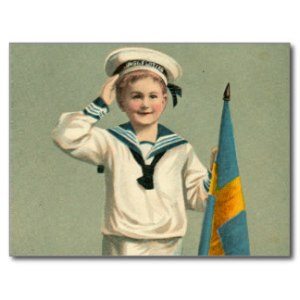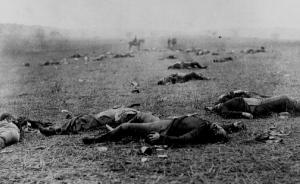Earlier this year, the Swedish website CD-Runda published an overview of The Victor Mourning in their series of articles on Gothic Country. We’ve translated it for our non-Swedish speaking visitors:
The Victor Mourning
The Victor Mourning are from Austin, Texas, but have now relocated to Maryville, Tennessee. The name “The Victor Mourning” gave me many headaches as I got to work trying to figure out what it referred to. My guesses as to the name’s origin grew ever wilder, everything from a Victorian mourning brooch (which actually appears in their logo below) to a 2008 episode of the soap opera The Young & the Restless in which a character named Victor mourns to the music of Leo Delibes’ opera Lakmé. In the end, I e-mailed The Victor Mourning to get the answer. Here is their response: ”The Victor Mourning is mostly a combination of words that seem to fit our sound. Victor was an early record company that started around 1901. Early recorded music is a big influence on us. We have a dark sound and are fascinated by the art of mourning (tombstones, mourning jewelry, etc.), so the “Mourning” part was added. Also, if you take it as a phrase, ‘The Victor Mourning’ can evoke the image of a winner who is deeply saddened by his victory, an image we also liked. And if all that weren’t enough, in this era you must have a unique name if anyone is to find your band via Google.” If you don’t ask, you’ll never know. Above all, it’s best not to think that you were wrong. In any case, it’s a very good name for a gothic country band.
The Victor Mourning was formed in 2008 and features Stephen Canner (guitar and vocals), Lynne Adele (guitjo and vocals), and Stefan Keydel (violin). Stephen has, to say the least, had a checkered career in the past in bands such as Your Real Dad, Too Cool, and The Nazarenes, whose repertoire ranged from punk, to glam rock, to garage rock. He then performed for a time under his own name, but wanted to start a new band. One difficulty in Austin — an important hub in the “gothic country” world — was meeting like-minded musicians who were not already involved in other projects. Arriving late to a show by The Builders & the Butchers at Yard Dog Gallery, Stephen met Lynne who worked at the gallery and met the criteria for a member of the band. Stephen had previously played with Stefan from time to time a few years earlier. The band was formed. Besides being musicians, Lynne works at a university and Stefan trained as a folklorist. Stephen and Lynne were married in 2009 (sic). When the band relocated to Tennessee, Stefan stayed in Austin but still performs and records with them. Stephen Canner writes all the music and lyrics, but everyone in the band contributes to the arrangements. Like the band Blanche, much of their style and influence comes from another time—particularly the Victorian era. According to the band’s website, their influences include: “Ancient American & British ballads, pre-WWII hillbilly music, abandoned shopping centers & empty swimming pools, scythes, cemeteries & odd museums, the smell of old books, gasoline & matchbooks, jewelry made of human hair, and the broken shores of Patagonia.”
The Victor Mourning are the least known band in this series of articles, undeservedly so. I discovered the band during my triangulation of the genre. In a discussion thread on a music forum one member submitted a very informed list of suggestions of gothic country bands. His taste was exquisite. Humbly, and in passing, he mentioned his own band. I followed this lead and eventually bought their album on line. I was hooked. There’s a dark streak in the music, but it’s also razor sharp and cuts straight through joints and marrow. Their website describes it as ”dark Americana, hillbilly noir, gothic country, dark twang, the half barbaric yawp of ancestors who would shame you if you met them.” The lyrics are dark and deal with ”grief-torn outcasts, confidences betrayed, piracy, and murder. There’s a song about a man who eats nothing but locusts and Campbell’s soup, another about an itinerant albino, and an unexpected version of the ancient Greek myth of Icarus set in the hills of rural Arkansas.” Stephen sings in a nasal, gloomy style and Lynne adds beautiful harmonies to the choruses.
The Victor Mourning have recorded an album: A Handful of Locusts (2010), released on Backwoods Modern Recordings. A single with the British label Folk Police has been planned since 2012, but has not yet been released. I asked The Victor Mourning if they plan to release a second album. They do, but it will likely only be released on vinyl and download in late 2013. Since my preferred format is the CD, this worries me a bit. As an alternative, if a CD is not in the works, I hope the album will be downloadable in FLAC (Free Lossless Audio Code) format. The cover [of A Handful of Locusts] was designed by Jamie Panzer and features a drawing of Gryllus Cristatus (grasshopper) by George Shaw, 1895 (sic).
What does the future hold for the band? It is, of course, hard for me to tell from the other side of the world, but the band is not just concerned with music. In the Journal section of their website, you’ll find very well written articles on subjects such as jewelry, art, antiques, quackery, genealogy, old historic homes, and the “Signs Following” church which follows the five signs: exorcism, speaking in tongues, laying on of hands, drinking poison (preferably strychnine or lye), and handling poisonous snakes. There’s much more content in this area of the website than in the sections dealing with the band’s music. What this means is unclear, but I hope it doesn’t displace the music. Judging by the high quality of the first album, this band should have another very good album in them. But it should be perfectly clear from this series of articles that you don’t become a millionaire playing gothic country. It’s more about survival than about being able to make a living with the music. It’s important that someone like me respects that fact while sitting here comfortably in my favorite chair with my laptop, expressing my views on the band’s choices, level of ambition, and persistence.
As I’ve pointed out in the other articles in this series, to suggest tracks for a CD compilation for a band with only one album seems a bit odd and pretentious, but all the songs are solid. Below is a suggested CD compilation.
Translated by Stephen Canner
















